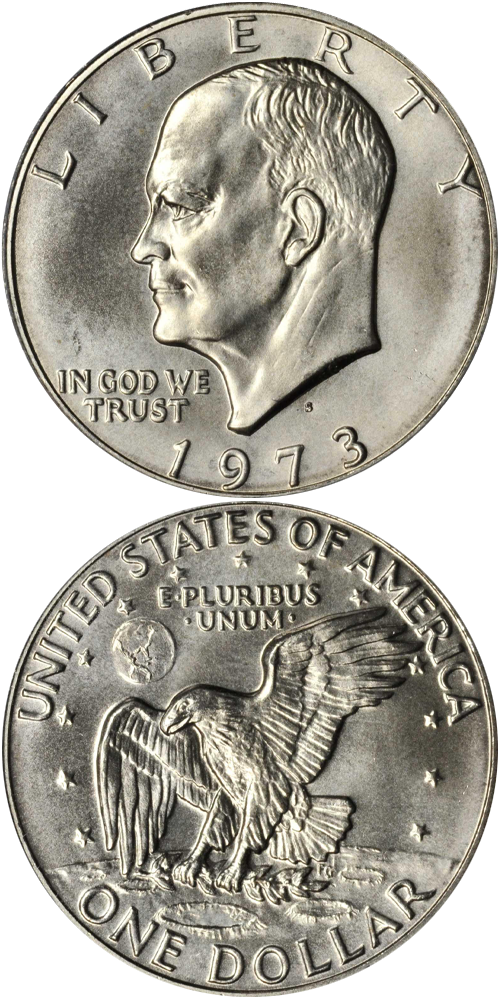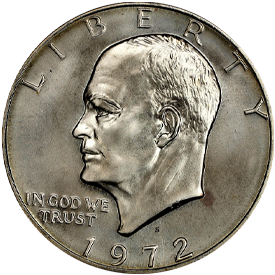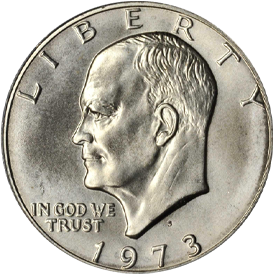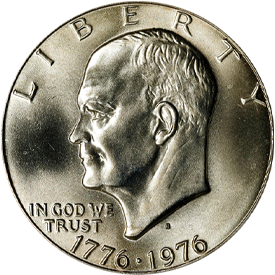The impetus behind the new dollar coin was the epic landing of Apollo 11 on the moon in 1969. It was felt that such a momentous event should be marked on our nation’s coinage. Since the commemorative half dollar program was still suspended, it was decided to revive the dollar coin and in 1970, legislation was passed authorizing the new coin. The obverse portrayed former President (and General) Dwight D. Eisenhower who had died in early 1969 and followed the layout of the Washington quarter in terms of word placement and arrangement. The reverse was modeled after the official insignia for Apollo 11, though no mention is made of the mission’s name.
The first coins appeared in 1971, and were struck in both copper-nickel clad for general circulation and a 40% silver alloy for sale to collectors. Despite being generally well-received, the coin failed to achieve widespread circulation and most of the circulation strikes ended up in Las Vegas Casinos for use in slot machines or as dollar tokens.
For the bicentennial in 1976, the coin received a new reverse picturing the Liberty Bell and the moon, and a dual-dated obverse (1776-1976) as seen on both the quarter and half dollar. This type was struck in both copper-nickel for circulation and the 40% silver alloy for collectors.










